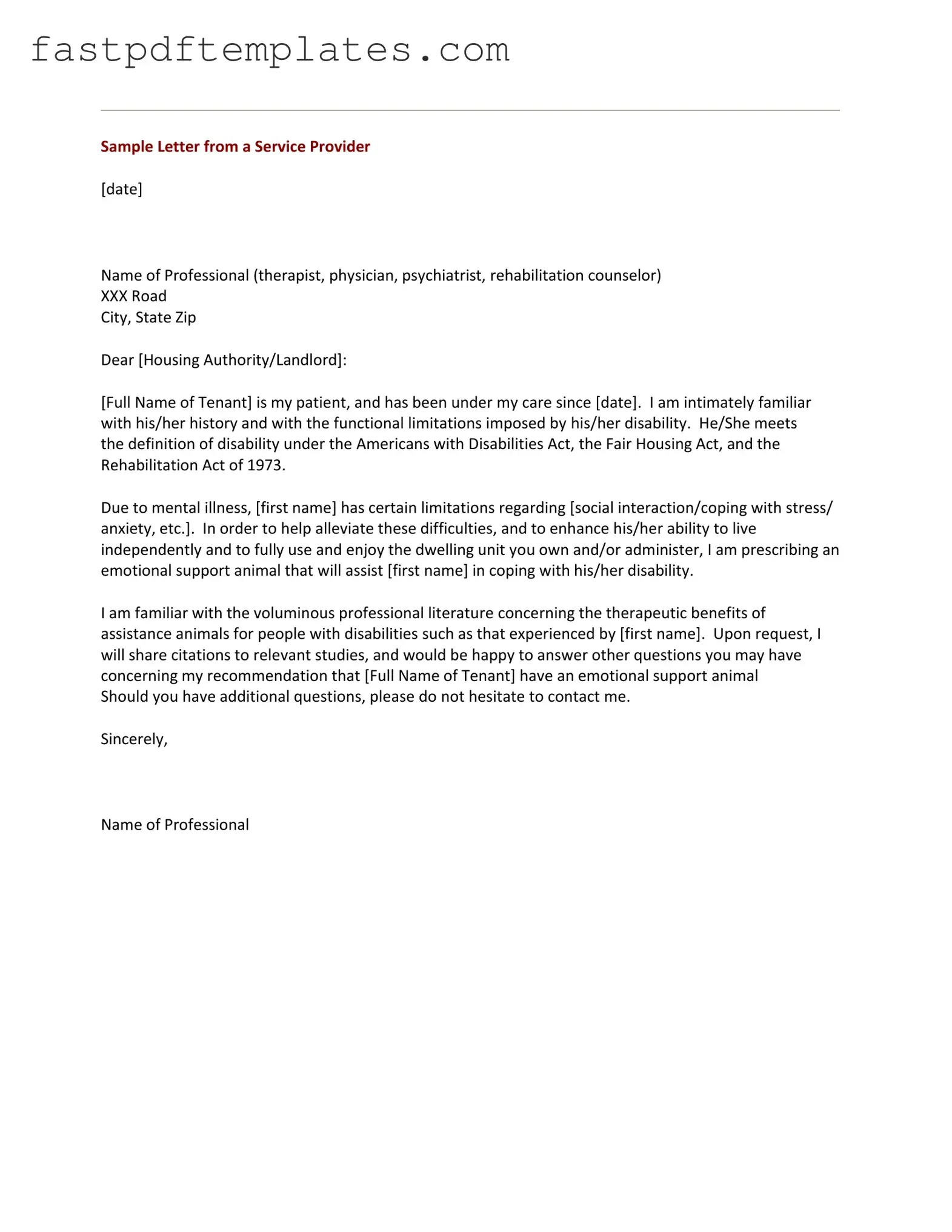The Emotional Support Animal (ESA) Letter serves as a formal document that validates an individual's need for an emotional support animal. Similar to the ESA Letter, the Service Animal Letter is issued by a licensed mental health professional. This letter confirms that an individual has a disability and requires a service animal for assistance. Both letters provide essential support to individuals, but the primary distinction lies in the type of animal. Service animals, specifically trained to perform tasks for individuals with disabilities, differ from emotional support animals, which provide comfort and companionship.
The Psychiatric Service Dog (PSD) Letter is another document akin to the ESA Letter. It is intended for individuals who require a dog specifically trained to perform tasks related to their mental health conditions. Like the ESA Letter, the PSD Letter must be provided by a licensed mental health professional. However, the PSD Letter emphasizes the animal's training and the specific tasks it performs, whereas the ESA Letter focuses on the emotional support aspect without requiring task training.
The Therapy Animal Letter is also comparable to the ESA Letter. This document is issued for animals that provide therapeutic benefits to individuals, typically in a professional or clinical setting. While both letters highlight the emotional support provided by animals, the Therapy Animal Letter often pertains to animals that are not solely owned by the individual but may be part of a therapy program. The focus is on the animal's role in therapeutic interventions rather than personal companionship.
The Pet Prescription is another relevant document. It is typically written by a healthcare provider to recommend pet ownership for therapeutic reasons. While the ESA Letter is specifically for emotional support animals, the Pet Prescription can apply to any pet. This document emphasizes the mental health benefits of having a pet but does not confer the same legal rights or protections as an ESA Letter.
The Housing Letter for Emotional Support Animals is closely related to the ESA Letter. This document specifically addresses the need for an emotional support animal in housing situations. It outlines the individual's need for the animal to mitigate their mental health condition, allowing them to live in a pet-restricted environment. This letter is crucial for ensuring that individuals with emotional support animals can secure housing without discrimination.
The Airline Emotional Support Animal Letter is another similar document. This letter is used to facilitate travel with an emotional support animal on commercial flights. It serves to inform airlines of the passenger's need for their animal due to a mental health condition. While the ESA Letter can be used for various purposes, this specific letter caters to travel requirements, ensuring compliance with airline policies.
The Disability Verification Letter is also akin to the ESA Letter. This document is often required for various services and accommodations related to a person's disability. It serves to confirm the existence of a disability but does not specifically address the need for an emotional support animal. Both letters are issued by licensed professionals, but the Disability Verification Letter may not necessarily include details about the animal.
The Medical Recommendation for an Emotional Support Animal is another relevant document. This recommendation is typically provided by a healthcare provider to support an individual's claim for an emotional support animal. Similar to the ESA Letter, it outlines the individual's mental health needs. However, it may lack the formal structure or specific legal language typically found in a standard ESA Letter.
Finally, the Mental Health Treatment Plan is comparable in that it may include references to the need for an emotional support animal as part of a broader treatment strategy. This document outlines the individual's mental health goals and the methods used to achieve them. While it may mention the benefits of having an emotional support animal, it is not a formal letter and does not carry the same legal weight or specificity as the ESA Letter.

